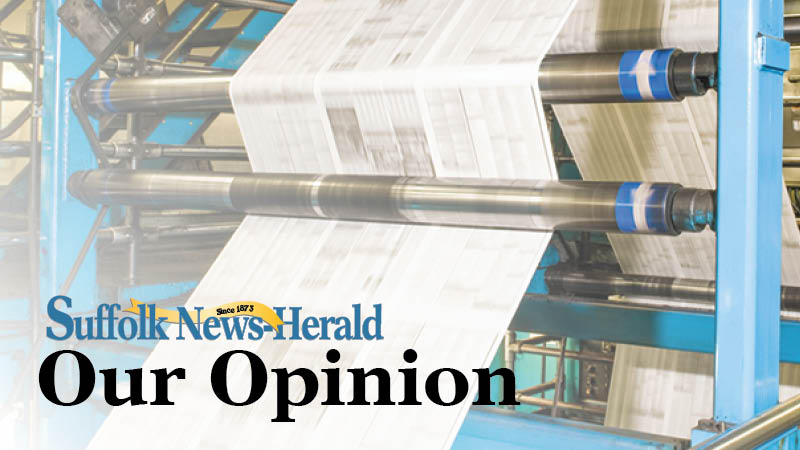Safety first on the JRB
Published 10:13 pm Friday, July 26, 2013
We’ve been down this road before.
In the 1980s, when a spate of crashes along the steel-grid portion of the James River Bridge raised safety questions about the new span, the Virginia Department of Transportation responded by installing metal studs on that part of the bridge to help increase traction.
Frequent commuters complained about the increased wear on their tires, but the extra traction resulted in added safety for those crossing the bridge, especially in wet weather. The trade-off was worth it in the end.
Late last year, VDOT completed a replacement of the steel bridge deck, and everything seemed OK until mid-February. But a series of crashes, including one resulting in a fatality, caused officials, including Isle of Wight Sheriff Mark A. Marshall, to question the safety of the new deck. Marshall wrote to VDOT, asking for a review of the grid-deck replacement and corrective actions to be taken, if it were revealed there was a deficiency.
To VDOT’s credit, that review was promptly completed. Investigators found that, other than on the bridge deck, where the spike in crashes had occurred, this has been the safest year on record for the James River Bridge. About 30,000 vehicles cross the span without incident each day.
In a report on the investigation, the agency also stated it had found no design flaw that would have contributed to the crashes along the steel grid at the drawbridge portion of the span.
But the crashes speak for themselves, so VDOT sought to come up with a variety of options to make the steel deck safer. Among those options was continuing a reduced-speed zone that had been instituted there while the study was ongoing. Traffic engineers also considered adding warning signs prior to the section and asking Virginia State Police to continue increased patrols of the bridge that were put in place while the study was in progress.
Those actions might have improved the situation to a degree, but they would not have had the positive effect on safety that adding metal studs to the steel grate will have. VDOT seems to have come to the same conclusion and has set plans in motion to add the studs in the fall, at a cost of about $800,000.
There are sure to be complaints again about the excess wear those studs will cause to tires, but the safety of Virginia motorists must be paramount in such decisions. It’s a lesson the agency should file away for reference for the next time it replaces the steel deck.



